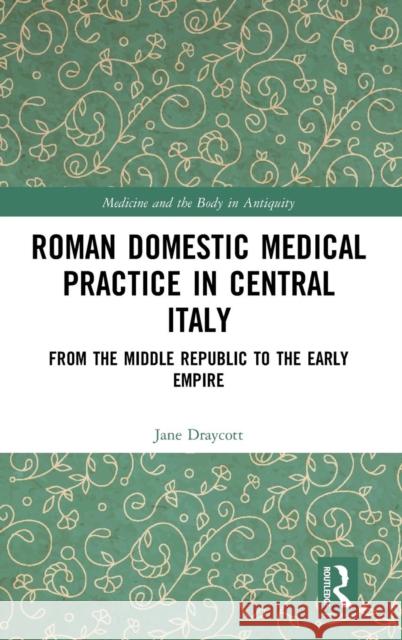Roman Domestic Medical Practice in Central Italy: From the Middle Republic to the Early Empire » książka
Roman Domestic Medical Practice in Central Italy: From the Middle Republic to the Early Empire
ISBN-13: 9781472433961 / Angielski / Twarda / 2019 / 186 str.
Roman Domestic Medical Practice in Central Italy: From the Middle Republic to the Early Empire
ISBN-13: 9781472433961 / Angielski / Twarda / 2019 / 186 str.
(netto: 668,18 VAT: 5%)
Najniższa cena z 30 dni: 654,86 zł
ok. 16-18 dni roboczych.
Darmowa dostawa!
Recent scholarship on gardens in Roman Italy has focused largely on the aesthetic or symbolic significance of gardens. This is far removed from the tradition of the hortus - the garden as a productive irrigated space used to grow herbs, fruit and vegetables. The uses of garden produce for both alimentary and medicinal purposes is explicitly discussed in the agricultural treatises of Cato, Varro and Columella, and in works on natural history, such as that of Pliny the Elder. An individual's diet and state of health were known to be connected, and the distinction between what was a foodstuff and what was a medicament was often blurred, particularly in the sections of Pliny's Natural History dealing with the properties of plants. Although scholars have broached the subject of the foodstuffs produced and consumed at various locations around the empire attempts to deal with the production of medicinal ingredients have been more tentative. Scholarship on this topic has concentrated either on general surveys of the ancient drug trade or studies on specific types of drug. The aim of this monograph is two-fold: to examine the literary, epigraphic and archaeological evidence for the use of the garden in domestic medical practice in Roman Italy from the late third century BC to the late first century, and to show how these roles were linked to the Roman family's physical and mental wellbeing.











